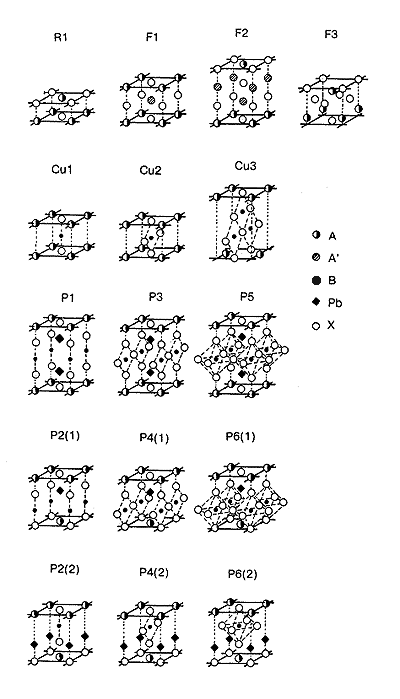
Possible new phases in layered perovskite-like crystals
(crystal-chemical prognosis)

Aleksandrov K.S. and Beznosikov B.V.
The broad group of crystals containing in their structures octahedral BX6 groups (B - small cation, X - anion) which linked by vertices and form three-dimensional frames or two-dimensional slabs is widely studied in the modern solid state physics.
Among octahedtal structures, of special importance are perovskites ABX3 and related structures , including layered perovskite-like structures built by two-dimensional single, double, etc. layers of octahedra-sharing vertices. Perovskite-like (PL) structures are often cation- or anion-deficient. In some instances, octahedra degenerate into pyramids, plane square BX4 networcs, and even X-B-X dumbbells, alternating along one or two directions. Hereafter, A and B denote cations and X denotes anions.
During the last few years, the authors tried to analyze the published structural data concerning perovskites, their deficient versions, PL-polytypes and layered PL-structures. The main aims of the work have been an effort to find the general scheme of architecture for the stoichiometric, anion- and cation-deficient PL-crystals and to determine the interrelations between different types of PL-structures. It was shown recently [1, 2] that the structures of the all known PL-crystals can be considered as the systems of slabs containing n layers (n = 1, 2, …,∞) vertice-linked octahedra BX6 (O), pyramids BX5 (P) and/or square nets BX4 (Q) intergrowing by their outer surfaces with blocks of different types when the layered PL-structures are formed.
 |
| Fig. 1a. Types of perovskite-like slabs |
 |
| Fig. 1b. Types of blocks known in the layered perovskite-like structures |
Full text [252K pdf]
|